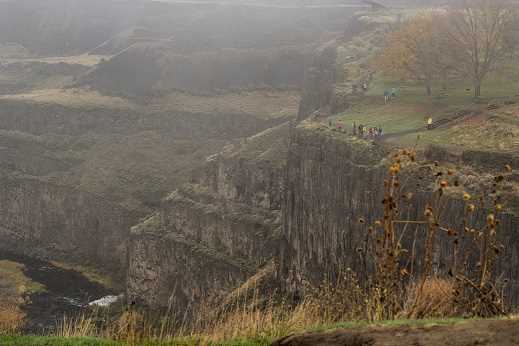This morning the National Geographic Sea Bird woke up in the Palouse Region of Southeastern Washington. Anchoring near the mouth of the Palouse River, there were several exciting morning activities to choose from. One option was to explore the Palouse River by expedition landing craft, accompanied by one of our naturalists, who explained in detail the landscapes and wildlife intrinsic to the Palouse area. There was also a chance to venture by kayak, and explore the Palouse area, up close and personal. Guests could paddle right up to the basalt rock cliffs where they were able to witness the birds and insects that have created their homes along the rocks and bushes lining the water’s edge.
Lastly, there was an option to have a dry landing by expedition landing craft, on a nearby beach, not too far from the anchored National Geographic Sea Bird. Bus transportation was provided for guests and escorted them to Palouse Falls State Park. The Palouse Falls lies on the Palouse River, upstream of the confluence with the Snake River. The waterfall consists of an upper falls with a 20-foot drop and a lower falls with a 198-foot drop. This area has been shaped by Ice Age floods, which carved steep-walled canyons, sculpted immense waterfalls, and left behind landscapes found nowhere else on Earth. Guests enjoyed misty panoramic views, talking with our geologists, and taking short walks around the park.
Back onboard, the rest of the day was spent cruising, shopping at the Global Gallery, a galley tour, staff presentations on Lewis and Clark, and finally, making transits through the Lower Monumental Dam, as well as, Ice Harbor Dam. Guests were invited to the bow of the ship, with a naturalist ready to narrate the process of the transit through the lock and relay the history of the dams. A morning in the Palouse Region, an afternoon entering locks and dams, and evening cocktail, Recap, and dinner was truly enjoyed by all!
“A river cuts through a rock not because of its power but its persistence.” - Unknown







